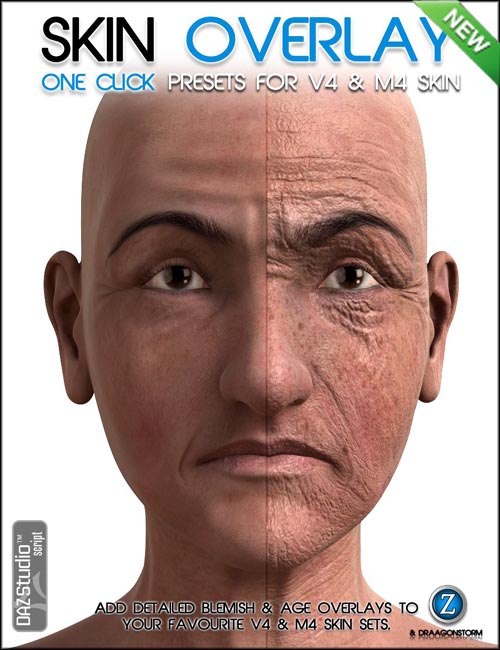V4 Wet Skin Shader Downloads
четверг 25 октября admin 14
Skin Shader Textures The textures used on the character's skin are all at 4K resolution and were originally produced from facial scans of the actor. The textures were then cleaned up and tweaked by artists at Epic. This skin setup utilizes five total texture maps: diffuse, roughness, specularity, scatter, and normal. Texture Name Description Diffuse The diffuse map supplies the Base Color for the Material. At 4K, you can see the tiny capillaries just underneath the surface. Any darkening of wrinkles will accentuate the texture supplied by the normal map. ( UE4_Demo_Head_D) Roughness The roughness map is stored within the alpha channel of the diffuse texture.
This is a common technique used to minimize the amount of textures in use. Note that the roughness increases within pores and wrinkles. This causes those areas to appear less shiny, accentuating the look of depth provided by the diffuse and normal map. Also note that the hair texture on the head is pushed out to fully rough (1.0) this prevents any stray specular highlights from the scalp, which will give a much more significant sense of depth to the hair. ( UE4_Demo_Head_D) Specular The specular map scales the amount of specular highlight visible across the surface of the skin.
It is important to note that the default value for specularity is 0.5. This map boosts specularity at areas where the skin may be stretched a bit tighter, and dampens it in areas where we don't want to see reflection, such as the center of pores and within wrinkles. ( CH2_exp04_merged_spec_f_FC_FINAL) Scatter The scatter map controls how much light is going to be scattered through the surface of the skin.

HUMAN SKIN SHADING - REDEFINED. It was our main goal, while developing the RedSpec SSS shaders, to automate this process as much as possible, so you can focus on.
Areas that are dark will exhibit very little scatter, such as the cheeks, while lighter areas will have higher amounts of perceived scatter, such as the nose and ears. The color of the scatter is managed by the ( UE4_Demo_Head_BackScatter) Normal The normal map works as expected in typical material setups, supplying the tactile texture to the surface by perturbing pixel normals. There is nothing out of the ordinary in its setup for this example. ( UE4_Demo_Head__normals). • The lighter hair represents the primary specular highlight. The brighter red hair represents the secondary specular highlight. The approximation algorithm used in UE4's hair shader creates these effects in a similar manner to how they are made in the real world.
As light strikes the surface of a hair follicle, it does not simply bounce off. Hair is translucent, allowing some light to pass through it, to potentially bounce around inside it, then exit. The hair shader approximates this with three possible paths for light to travel as it interacts with hair, as shown in the animated GIF diagram below. Cross section of single hair follicle showing how the hair shader approximates interaction with light, demonstrating the three primary types of paths light will take.
See the table below for descriptions of each part of the process. Number Description • The growth (root to tip) direction of the hair follicle. • Reflection-only path, with light bouncing off the surface of the hair.
This produces the primary specular highlight. • Transmission-transmission path, in which light passes into the hair follicle and back out the other side.
This is how light scatters within a volume of hair. • Transmission-reflection-transmission path, in which light enters the hair follicle, reflects off the inside boundary of the surface, and then exits. This produces the secondary specular highlight.
As shown in the diagram above, a strand of hair is not a perfect cylinder or tube. In actuality, hair appears more as a series of stacked cones. This means light bouncing off the surface of hair will be scattered differently than it would if hair were perfectly smooth. Further, because each strand of hair is generally pointing in a different direction, the specular highlight will not be unified, but will be independently placed based on the direction the hair is pointing. This is often referred to as anisotropic specularity, which is also supported by the UE4 hair shader. Edge Masking Though not specifically part of the shader itself, it is worth noting that the Material used on the example character's hair - as well as the other characters of Epic's game Paragon - uses what is called an 'Edge Mask' to fade the hair away as it becomes edge-on to the camera. Download soal try out smp 2013 dan pembahasannya.
Since hair is rendered as a series of planes - see below - it is likely that from certain camera angles, one would see the edge of each sheet, breaking the hair effect. To help alleviate this problem, the Material calculates the camera's vector against the vertex normal such that as the surface turns perpendicularly away from the camera, it will also fade away to complete transparency. The other side of this approach, however, is that in doing so it is possible that the hair shader may show more of the scalp. This is also why many characters with thick heads of hair will often have a hair texture painted on the scalp, as seen in the image below. Hair Textures In this use of the UE4 Hair shader, the final result is driven by five primary textures: Diffuse, Alpha, Root, Depth, and a unique-per-strand ID texture.
